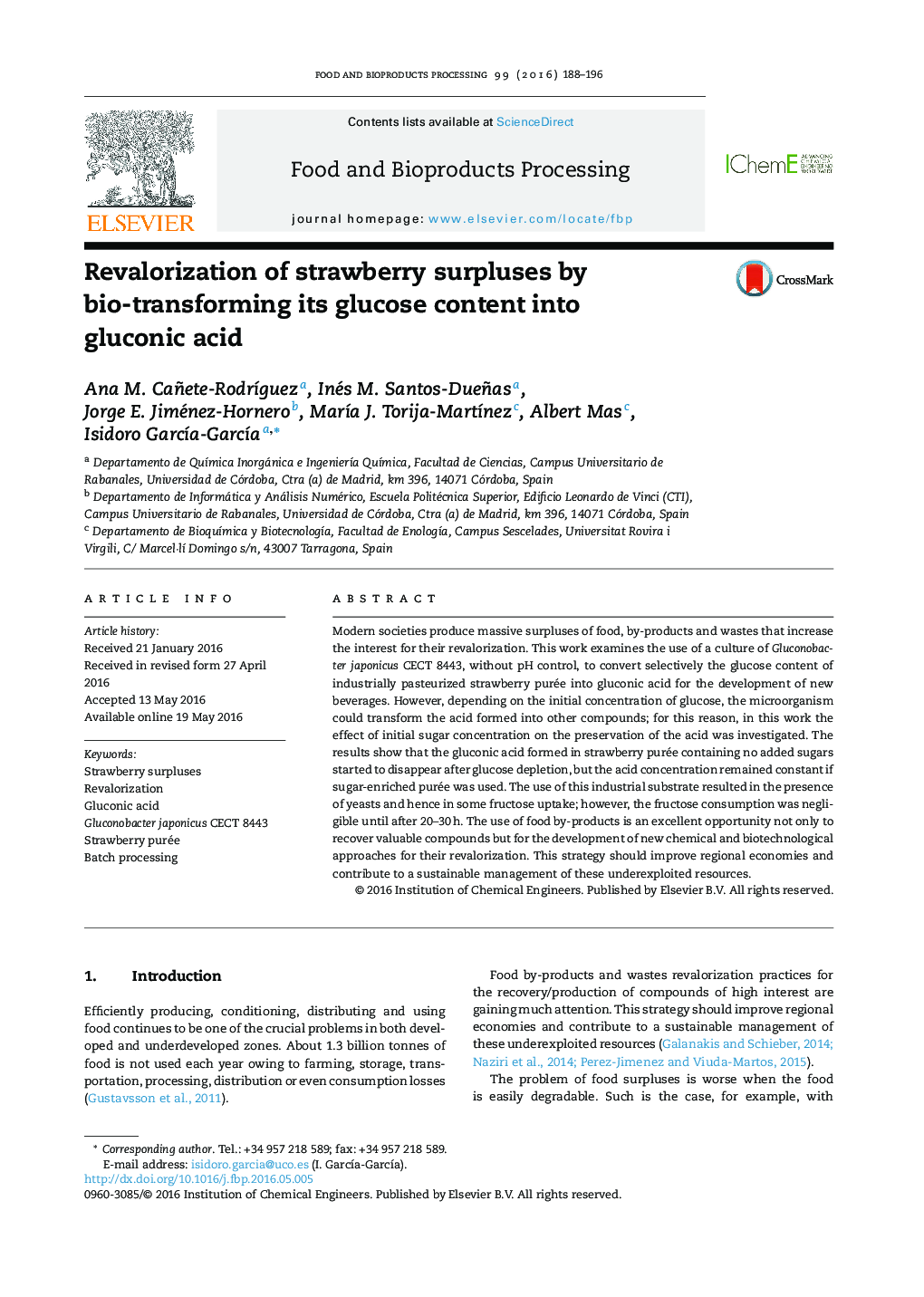| Article ID | Journal | Published Year | Pages | File Type |
|---|---|---|---|---|
| 6488519 | Food and Bioproducts Processing | 2016 | 9 Pages |
Abstract
Modern societies produce massive surpluses of food, by-products and wastes that increase the interest for their revalorization. This work examines the use of a culture of Gluconobacter japonicus CECT 8443, without pH control, to convert selectively the glucose content of industrially pasteurized strawberry purée into gluconic acid for the development of new beverages. However, depending on the initial concentration of glucose, the microorganism could transform the acid formed into other compounds; for this reason, in this work the effect of initial sugar concentration on the preservation of the acid was investigated. The results show that the gluconic acid formed in strawberry purée containing no added sugars started to disappear after glucose depletion, but the acid concentration remained constant if sugar-enriched purée was used. The use of this industrial substrate resulted in the presence of yeasts and hence in some fructose uptake; however, the fructose consumption was negligible until after 20-30Â h. The use of food by-products is an excellent opportunity not only to recover valuable compounds but for the development of new chemical and biotechnological approaches for their revalorization. This strategy should improve regional economies and contribute to a sustainable management of these underexploited resources.
Related Topics
Physical Sciences and Engineering
Chemical Engineering
Bioengineering
Authors
Ana M. Cañete-RodrÃguez, Inés M. Santos-Dueñas, Jorge E. Jiménez-Hornero, MarÃa J. Torija-MartÃnez, Albert Mas, Isidoro GarcÃa-GarcÃa,
